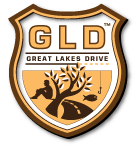French River – Hatchery Minnesota DNR
French River – Hatchery
5357 N Shore Dr Duluth, MN 55804
The fish community in Lake Superior has changed greatly from a century ago due to the introduction of nonnative species and the effects of commercial fishing.
In managing Lake Superior, the highest priority has been the restoration of the lake trout. Minnesota closed commercial and sport fishing for the lake trout in 1962. Sport fishing reopened a few years later. Since 1962, the DNR and US Fish and Wildlife Service have planted about 300,000 six-inch lake trout along the North Shore each year. The results have been a 250% increase in lake trout netted during surveys.
Another important management goal for the Lake is to maintain the prized steelhead by protecting habitat, restricting harvest, scientific study and properly applied stocking. The DNR also stocks chinook. The chinook program, though it provides an exciting sport fish, remains secondary to the restoration of the native lake trout and maintenance of the steelhead.
Trout and Salmon Production
These fish are reared to stock in North Shore streams and Lake Superior. Spawning adults are taken from the fish trap on the French River.
Chinook salmon spawn from September through November. Approximately 700,000 to 1,000,000 eggs are taken, fertilized, screened for disease, and raised to fingerling stage. Chinook fingerlings are stocked in North Shore where they stay for ten days before migrating to Lake Superior. The chinook feed in the lake for 3 to 4 years then return to the stream to spawn. Like all West Coast salmon, they die after spawning.
Steelhead and kamloops spawn in the spring (April through May). Eggs are fertilized, screened for disease and placed in incubation trays. Once hatched, the steelhead fry are stocked in North Shore streams. Steelhead spend 2 to 3 years in the stream then migrate to Lake Superior. Adult steelhead return to the stream in spring to spawn then return to the lake.
Kamloops are reared to various sizes. Some are stocked as fall fingerlings in northeastern inland lakes. Others are stocked in Lake Superior and are finclipped so they can be distinguished from steelhead. Adult kamloops return to the stream in spring to spawn then return to the Lake.
Check with the MN DNR for license Information and Fishing Regulations
View Site Fishing Facts and Figures
All content except photo the property of MN DNR. Photo the property of GLD.
IMPORTANT NOTE: Great Lakes Drive, affiliates, and site resources are not responsible for any incidents attributed to the use of this information. All information provided on this site should be considered a simple bit of information that informs the average individual on activities or available lodging that others have participated in, and in many cases warns them of dangerous aspects of a location, and should not be considered a promotion for taking part in the activity or a recommendation to use, stay, or support. Some of these pages represent extremely dangerous activities and should not be considered by individuals and families as normal activities. Many of the links provide information contributed by professionals or adrenaline junkies and are meant only as interesting points. Other information would probably never be heard about and represents wonderful historic facts and fiction about places that have disappeared. All activities from driving a car to entering the water can be hazardous and should be taken on at your own risk. Take responsibility for your actions and be very careful when exploring this wonderful fast land that is available to us all. Ads on the site may be from awesome companies but for legal reasons they do not necessarily represent the beliefs or receive the support of GreatLakesDrive.com. By reading the information on a page, and/or clicking on any of the links, you agree to take full responsibility in the result. Drive Safely! Stay on the path if you are concerned about the results of stepping off the edge. Discover a wonderful place right in your own backyard! You will never forget it.


